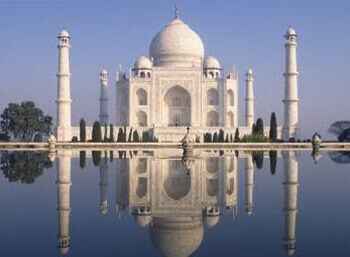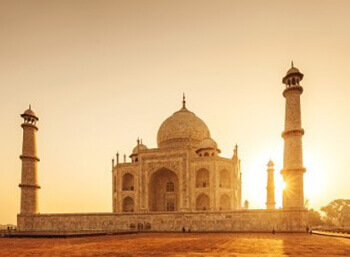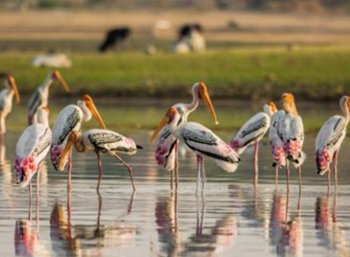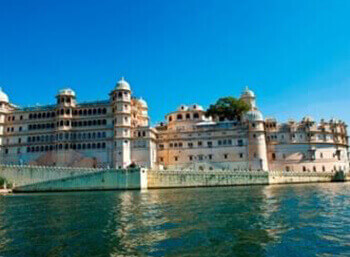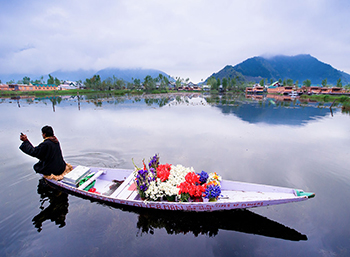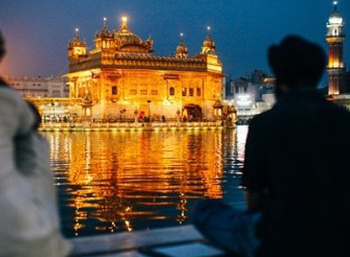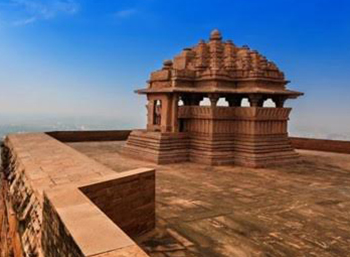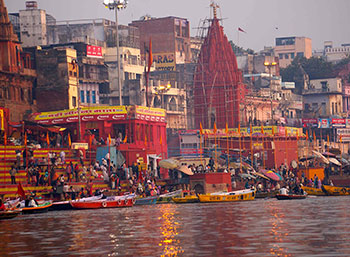Raj Ghat
Tourism in Delhi
Rajghat
Rajghat in Delhi is the cremation site of Gandhiji, Mohandas Karamchand Gandhi who is most reveredly remembered as the Father of Nation. This memorial is located between the main Ring Road which is now known as the Mahatma Gandhi Road and the banks of the Yamuna River, just southeast of Red Fort. Set amidst deep green lawns and fountains, Rajghat is surrounded by a lovely wooded area and several exotic trees creating a serene ambience.
The mortal remains of Mahatma Gandhi were cremated at this ghat or stepped embankment at the edge of the Yamuna river on 31st January in following his assassination while walking to his customary prayer meeting at Birla House.
The structure of the Samadhi reflects simplicity. The brick platform on which his body had been burned, a black marble platform of some twelve feet by twelve feet square and two feet deep and a surrounding while marble fence were erected and the shores were landscaped. The last words of Mahatma Gandhi, 'Hey Ram' are inscribed on the memorial platform which is flanked by an eternal flame.
Earthworks around the cenotaph protect it from the flooding Yamuna. Inside this enclosure trees were planted with and little square plots of white pebble stones added for decoration.
There are trees labeled near the platform planted by visiting dignitaries such as Queen Elizabeth II, Ho Chi Minh, the former Australian Prime Minister Gough Whitman and the former US president Dwight Eisenhower.
People of every class visit the memorial to pay their homage to Mahatma whom they fondly call the ‘Bapu’. Good parking facilities are available and all basic facilities for visitors are present within the premises.
Life of Mahatma Gandhi
Life of Mahatma Gandhi, the most respected political and spiritual leaders of the 1900's, has always been part of history-book stuff. Mohandas Karamchand Gandhi was born on October 2, 1869 in Porbandar, India. He got married to Kasturba at the early age of 13. He studied law in London and returned to India in 1891 to practice. In 1893 he took on a one-year contract for legal work in South Africa.
It was through witnessing the racism, prejudice and injustice against himself and other Indians in South Africa that Gandhi started to fight for his people's status and his own place in society. Gandhi stayed in South Africa for 21 years working to secure rights for Indian people. He employed a method of action called Satyagraha based upon the principles of courage, nonviolence and truth. He promoted nonviolence and civil disobedience as the most appropriate methods for obtaining political and social goals. In 1915 Gandhi returned to India at the end of his contract.
In May 1915, Gandhi founded an ashram on the outskirts of Ahmedabad and called it Satyagrah Ashram which is also known as the Sabarmati Ashram. There lodged twenty five men and women who took vows of truth, celibacy, ahimsa, non-possession, control of the palate and service of the Indian people. Gandhi's first major achievements came in 1918 when he started the Champaran agitation and the Kheda Satyagraha.
Using the principles of Satyagraha he led the campaign for Indian independence from the British Government. Gandhi was arrested several times by the British for his political activities. He taught the Indians the need of unity among the different religions, languages and classes of society and used several fasts in order to advocate the principle of non-violence. It was the Rowlatt Bill with its denial of civil liberties which finally brought Gandhi into active Indian politics. From 1919 to his death in 1948, he occupied the centre of the Indian political arena and changed the entire character of the political scene in India.
On August 15, 1947, India was partitioned and became independent. Gandhi refused to attend the celebrations in the capital and went to Calcutta where communal riots were still raging. On January 13, 1948, at the age of 78, he began a fast with the purpose of stopping the bloodshed. After 5 days, the opposing leaders promised to stop the fighting and Gandhi broke his fast. Twelve days later, a Hindu fanatic, Nathuram Godse assassinated him.
Location
TIME TO VISIT / ENTRANCE FEE
Open : Daily
Entery fee : Free
Opening Time : 06:30 AM Closing Time : 06:00 PM
Closed on public holidays : No
How To Reach
Nearest Airport
Indira Gandhi International AirportNearest Railway Station
Old Delhi Railway StationNearest Metro station
Kendriya Terminal.Other Info
Fast - Facts
Here are some facts about the Rajghat which would help you to have a quick glance of this famous memorial in Delhi. Also, this will make it a lot more convenient for you.
Special Feature
A prayer service is arranged for on every Friday, the day he was assassinated, at 5.30 pm in the evening.


